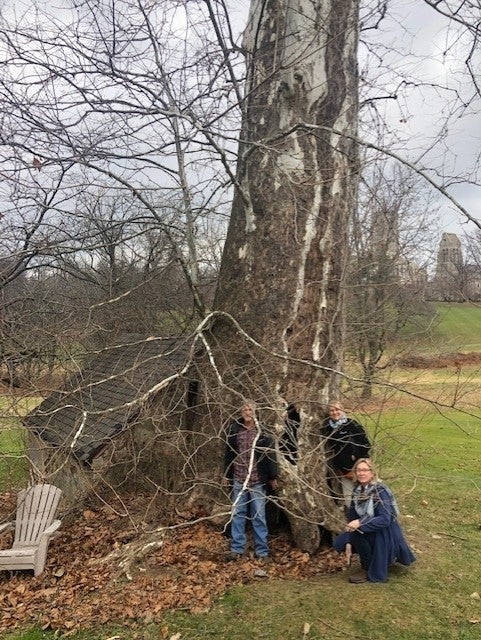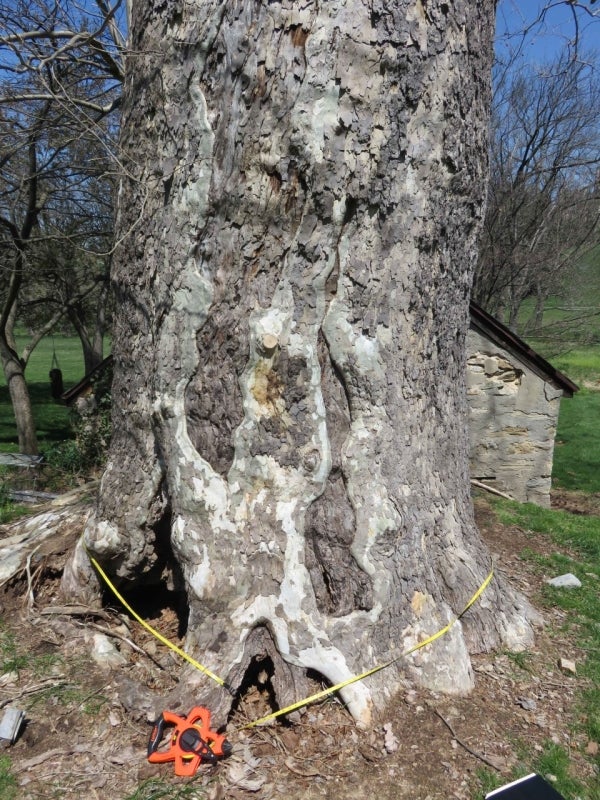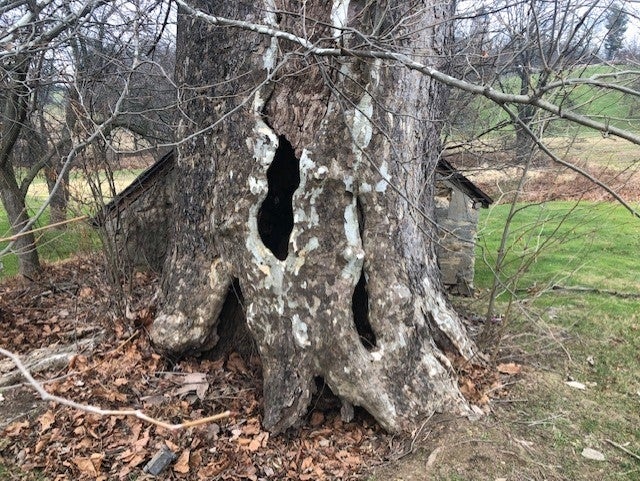Blog


For the past 10 years, the Morris Arboretum’s Urban Forestry Consultants have been honored to monitor the health and well-being of a renowned and beloved mature Platanus occidentalis (American sycamore) in Bryn Athyn, PA. Hal Rosner, formally a Bartlett Tree Expert employee now working for Schectman Tree Care, has cared for the tree over many years. Hal has asked the Arboretum's Urban Forestry team to periodically inspect the tree, often referred to as the Cathedral sycamore because of its proximity to the Bryn Athyn Cathedral. The sycamore is estimated to be 200 years old, stands about 95 feet tall, with a diameter at standard height of nearly 79 inches (54 inches above grade). The tree was likely planted in front of a springhouse, where it had plenty of water with little competition from surrounding trees, so it grew relatively quickly. Planting American sycamore’s adjacent to springhouses seems to have been a tradition in the 1700s and 1800s.



Over the years the owner has followed recommendations provided by the tree’s professional caregivers, including having an extension of the former house on the property (which was relatively close to the tree) carefully removed thus increasing the available rooting space near the tree. Unfortunately, due to the onset of severe and extensive decay within the base, a decrease in the structural roots’ strength, and proximity to the owner’s new house, Jason Lubar of the Morris Consultants has recommended the tree be removed. Biologically, the tree responded to the recommended soil and pruning treatments over the years and has pushed out much new growth in its canopy; however, the removal recommendation was given as decay has weakened the tree’s structure to the extent where the risk of tree failure was unreasonable given its location and proximity to valuable targets such as the new house’s outdoor patio and interior bedrooms.
After discussion with the owner, it was decided to leave some of the stump in situ where vigorous sprouts are growing from the base. It is hoped that these sprouts will continue to grow and, in the not so distant future, grow to replace the removed part of the tree so it will again take its place as a historical icon.